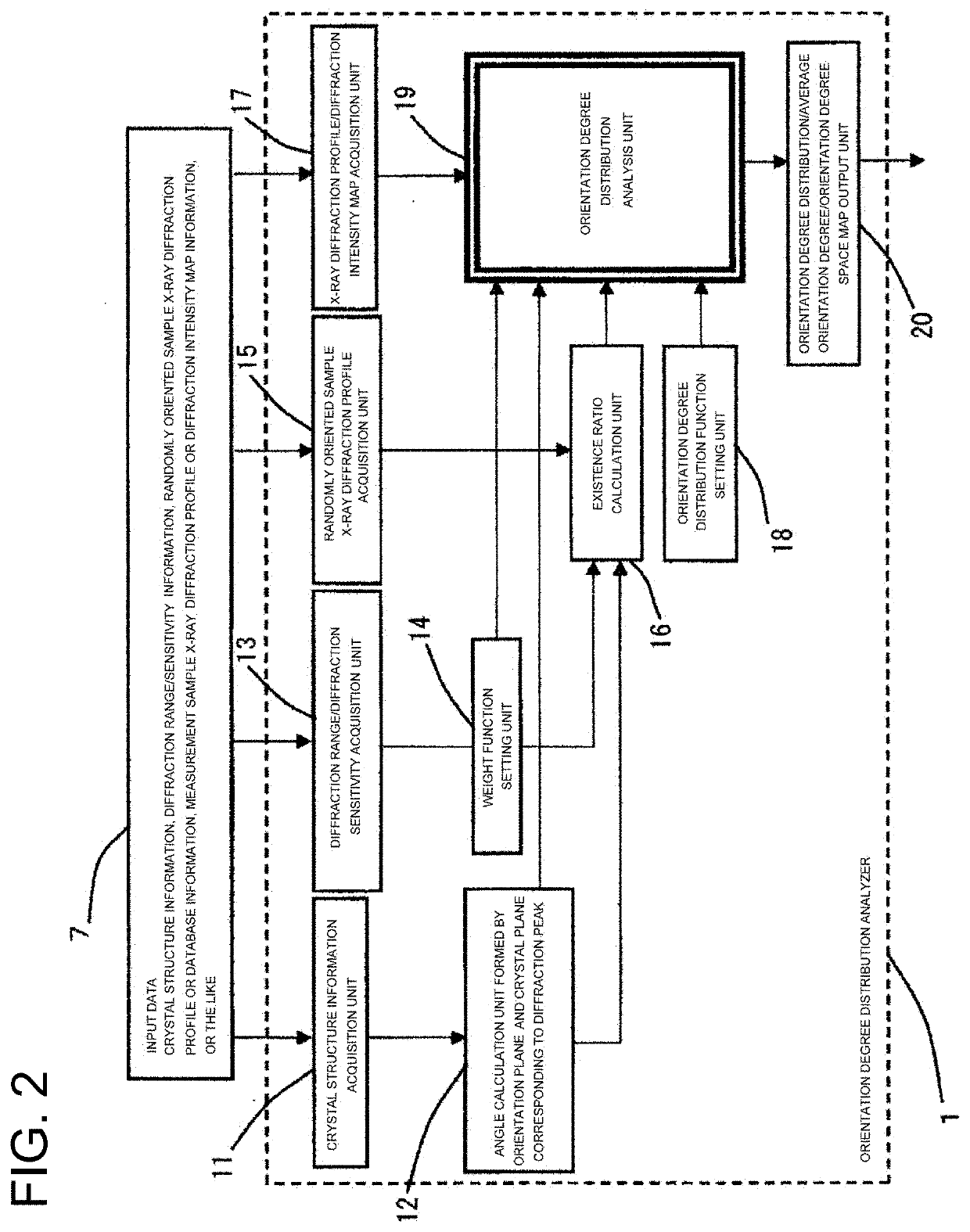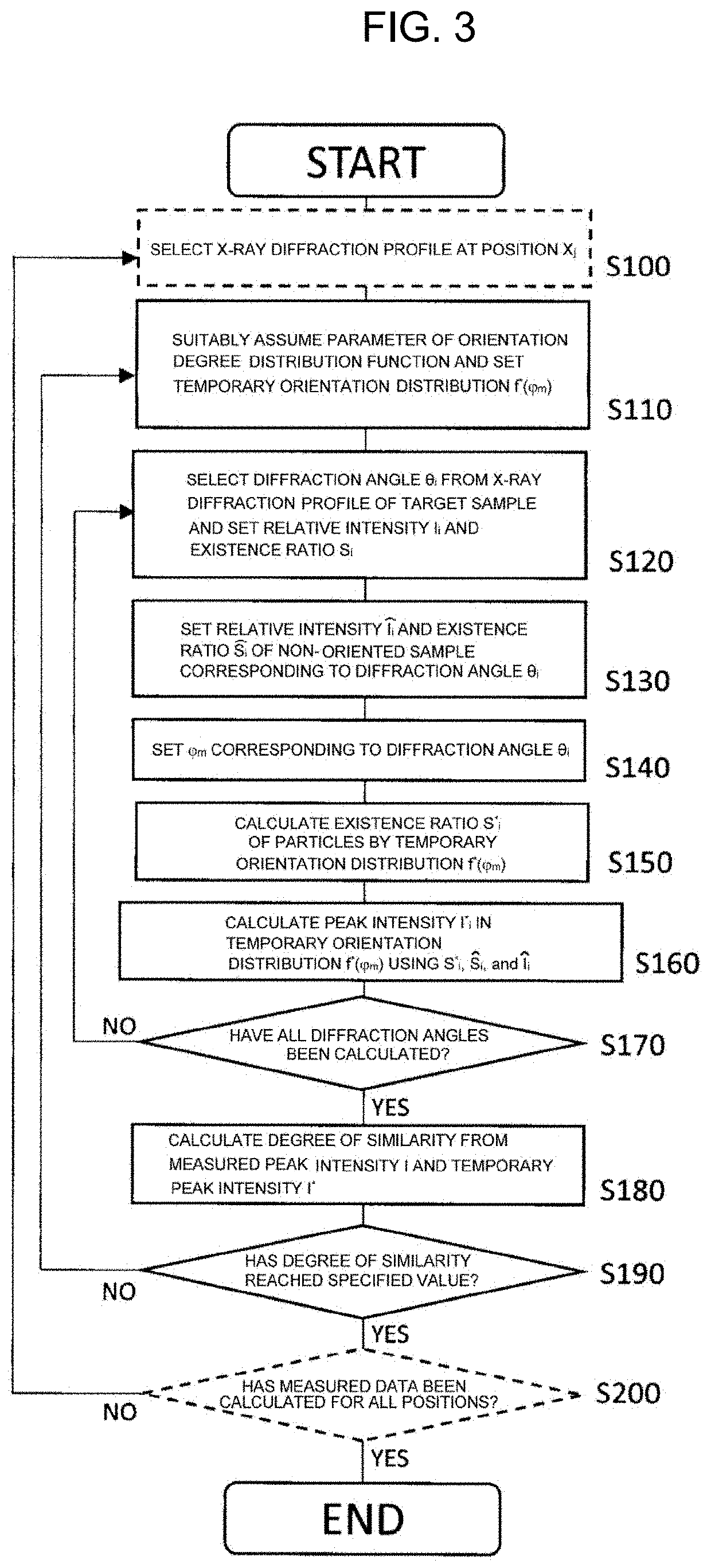Orientation degree distribution calculation method, orientation degree distribution analyzer, and orientation degree distribution analysis program
- Summary
- Abstract
- Description
- Claims
- Application Information
AI Technical Summary
Benefits of technology
Problems solved by technology
Method used
Image
Examples
example 1
[0080]An example in which the orientation degree distribution calculation of the Sm2Fe17N3 bonded magnet is performed using the above orientation degree distribution calculation method will be described.
(Calculation of Angle φm Formed by Orientation Plane and Crystal Plane Corresponding to Diffraction Peak of Interest)
[0081]According to a PDF card of Sm2Fe17N3; (ICDD Card No.: 00-048-1790) (hereinafter, referred to as Non Patent Literature 2), the crystal structure of Sm2Fe17N3 is a rhombohedral crystal system, and the lattice constants are a=8.74 and c=12.66, respectively. From this data, Table 1 shows the results of calculating the angle (φm) formed by the orientation plane (in the case of this example, the (001) plane orthogonal to the c-axis which is the axis of easy magnetization) calculated using Formula (5) and the crystal plane corresponding to the diffraction peak of interest. In Table 1, calculation results for only peaks between diffraction angles of 30 to 60 degrees amon...
example 2
[0096]A case where the same Sm2Fe17N3 bonded magnet as that prepared in Example 1 is used as a measurement target, a diffraction intensity map is acquired using a micro-focal X-ray source, and spatial mapping of the orientation degree is performed will be described.
[0097]The measured sample was the same sample as Sample A in FIG. 7, the surface orthogonal to the orientation direction was manually polished with abrasive paper, and a part of the polished surface was measured using a micro-focal X-ray source (Panalytical Focusing X-ray lens 50 μm HR, hereinafter, referred to as a focusing lens).
[0098]The focusing lens is obtained by bundling several millions of glass capillaries each having a diameter of about 5 micrometers with light from an X-ray point light source, and is a device capable of obtaining a pseudo-parallel X-ray beam having a spot diameter of about 50 micrometers by guiding X-rays while totally reflecting the X-rays inside. The measured area was about 4 mm3, and the mea...
PUM
 Login to View More
Login to View More Abstract
Description
Claims
Application Information
 Login to View More
Login to View More - R&D
- Intellectual Property
- Life Sciences
- Materials
- Tech Scout
- Unparalleled Data Quality
- Higher Quality Content
- 60% Fewer Hallucinations
Browse by: Latest US Patents, China's latest patents, Technical Efficacy Thesaurus, Application Domain, Technology Topic, Popular Technical Reports.
© 2025 PatSnap. All rights reserved.Legal|Privacy policy|Modern Slavery Act Transparency Statement|Sitemap|About US| Contact US: help@patsnap.com



